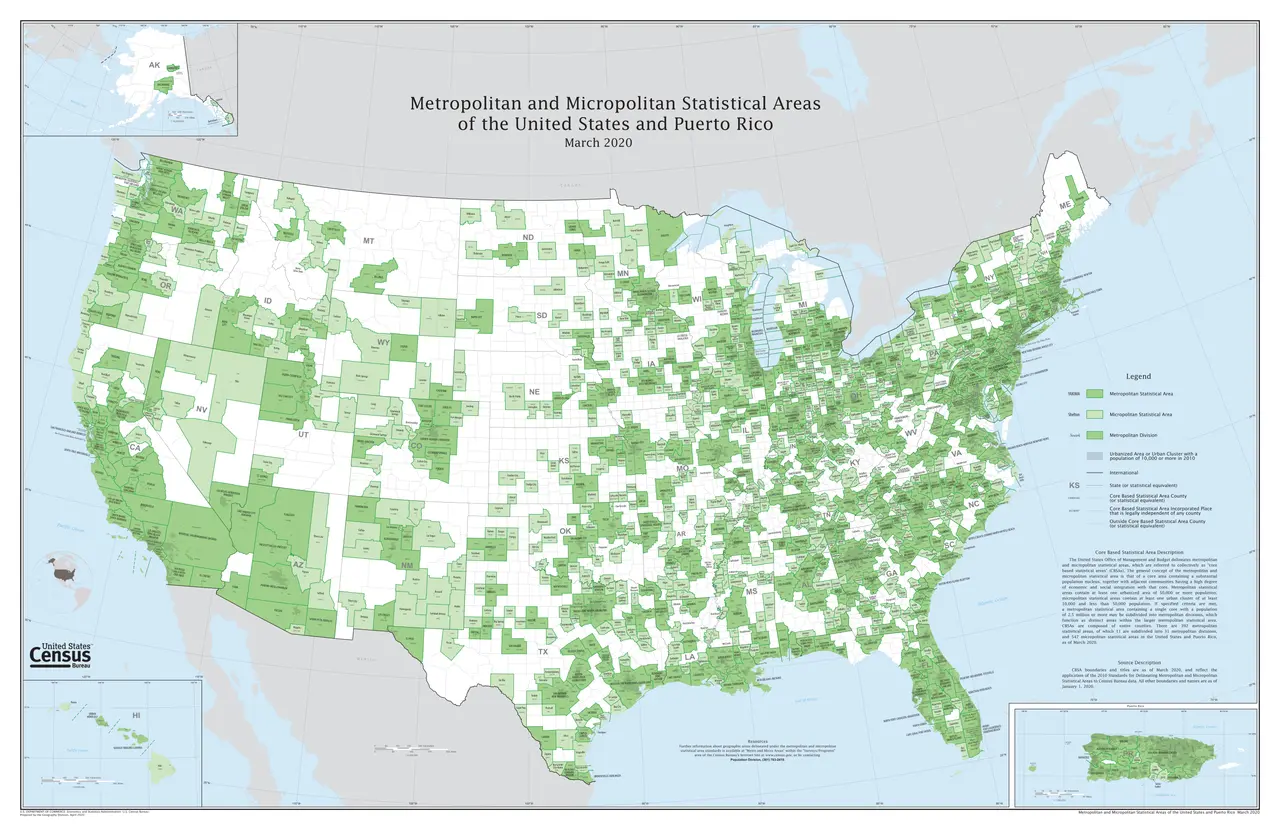I hear some cities call the larger area as metro (Vancouver) and other cities call it greater (Toronto). Is there a functional difference? Generally speaking, is one more urbanized than the other?
The “Metro” area generally refers to the main city and any other high density cities right beside it, probably linked together by high volume public transit with massive numbers of people commuting between each other every day.
The “Greater” area generally refers to a much wider area including many of the much smaller towns that even people in the same country won’t recognize, rural farmland, etc. Their economies and business are probably mostly dependent on the main city so they may be considered linked, even though there aren’t as many people moving back and forth between them daily.
According to gpt-4o:
The distinction between “greater” and “metro” areas can vary, but generally:
-
Greater Area: Refers to a broader region that encompasses a primary city and its surrounding suburbs, towns, and rural areas. This term emphasizes the inclusion of all areas that are socially and economically linked to the primary city. For example, “Greater London” includes not only the city of London but also its surrounding boroughs and smaller towns.
-
Metropolitan (Metro) Area: Focuses more on the urban core and its directly connected suburbs and cities. It typically includes the main city and its high-density surrounding areas that share infrastructure, economy, and services. A metropolitan area is often defined by commuting patterns and economic interdependence. For example, the “New York Metropolitan Area” includes New York City and its densely populated surrounding counties in New Jersey, Pennsylvania, and Connecticut.
While both terms describe regions that extend beyond a single city, “greater” is often more expansive and includes more diverse types of areas, whereas “metro” emphasizes the contiguous urban and suburban zones directly tied to the city.
Why do you people do this? This isn’t !askbots@lemmy.world.
What you mean, you people?!
-
Metro can often refer to the core city plus the suburbs in its county. So LA County more or less == LA metropolitan area; contiguous development despite there being technically multiple cities contained—LA proper, Hollywood, Studio City, Santa Monica, Beverly Hills, Venice, etc. Oklahoma City metro contains OKC, Moore, Edmond, and so on.
From my basic understanding
Greater = the area including and around a city
Metro = the parts of a community within some sort of combined local government
I always took it like Manhattan vs all of NYC. Manhattan and maybe Brooklyn is the metro part, and all 4 boroughs are the greater city.
NYC is a bad example because it’s an extreme outlier in terms of size and density. But the metropolitan area is actually much larger than the urban area; here’s a map of all the counties within the NYC metropolitan area.

It covers 8,200 square miles, just slightly less than the area of New Jersey.
Metropolitan areas are quite large and typically include the core city along with the entire surrounding area that is economically and culturally heavily linked with the core city.
https://en.m.wikipedia.org/wiki/Metropolitan_statistical_area
Here is a map of all the metropolitan and metropolitan statistical areas (MSAs) in the US. Micropolitan areas are essentially defined the same way, except the core urban area of a micropolitan area is <50,000 population, while a metropolitan area has a core city of >50,000 population.

You can see that metropolitan areas include vast areas that are not even remotely urban. Beyond that, there is also a category called the Combined Statistical Area, which often combine multiple metropolitan areas.
Here is a map of LA where the red areas are urban areas, the beige counties are part of the Metropolitan Area, and the yellow counties are part of the CSA.

The CSA for LA is a whopping 34,000 square miles, or slightly larger than the island of Ireland or the state of South Carolina. However, it only contains about 2,300 square miles of urban area. Estimating the urban area is even more of an imperfect science than the metropolitan area, so I’m not sure how they calculated that number.
When people say Greater Boston or Greater Toronto, they are usually referring to the MSA, but might also be referring to the CSA.
Funny, I see it the opposite way.
I have often used both used together “greater X metropolitan area” X being the city in question.
I’m not sure about actual functional definitions, but I think of it based on the size of the various cities involved. Metro seems to be used when referring to relatively large cities and towns that have blurred together to the point you move between them without distinct separation. Whereas Greater is applied when there is still a more clear separation between the core “big city” and the suburban towns around it.
I feel like metro has more of a concrete definition and greater is more colloquial. I also feel like greater might sometimes include some further flung nearby communities.

In the U.S., the census department defines the metro areas based on a number of factors (like one factor is the number of commuters). https://en.m.wikipedia.org/wiki/Metropolitan_statistical_area
There’s also a larger combined statistical area that often involves multiple major cities that are close enough to form an economic region. For instance, DC and Baltimore basically share suburbs and are connected by public transportation: https://en.m.wikipedia.org/wiki/Washington–Baltimore_combined_statistical_area
I believe greater is only used colloquially here but the UK’s Office of National Statistics uses “Greater” in a formal way: https://en.m.wikipedia.org/wiki/Greater_London_Built-up_Area https://en.m.wikipedia.org/wiki/Greater_Manchester_Built-up_Area
I assume that’s why it’s part of North American vernacular.
“Metro” is used formally and is a formal designation used for things like statistical purposes. “Greater” is less formal and is used by the general public. I’ve heard Greater Vancouver far more than Metro Vancouver, but with those definitions, there are likely both.
For Toronto, you have Metro Toronto which is the original city. The Greater Toronto Area includes all the cities that were amalgamated into Toronto in 1998, plus Mississauga and Brampton. It just denotes an area that’s generally included with the major city when referring to the entire region.
I live in the greater Stockholm area in Sweden, we don’t use the “metro” city term, but to me it seems like there could be three definitions, I will use Stockholm as an example:
Stockholm, the actual area the city covers.
Metro Stockholm, the area that the Stockholm Metro serves, this include peices of suburbs.
Greater Stockholm, the area served by the larger lines of public transport.







